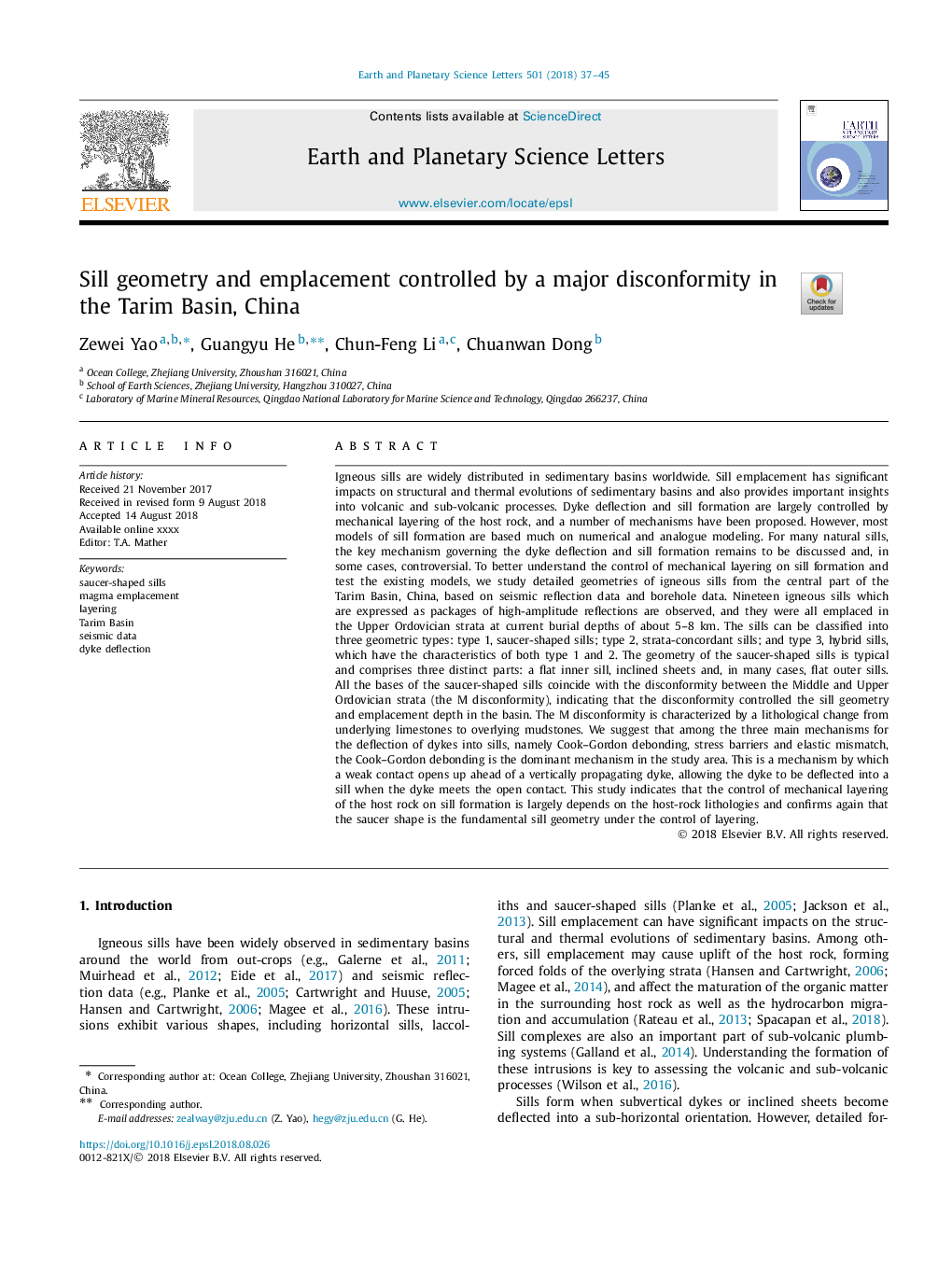| کد مقاله | کد نشریه | سال انتشار | مقاله انگلیسی | نسخه تمام متن |
|---|---|---|---|---|
| 8959568 | 1646327 | 2018 | 9 صفحه PDF | دانلود رایگان |
عنوان انگلیسی مقاله ISI
Sill geometry and emplacement controlled by a major disconformity in the Tarim Basin, China
دانلود مقاله + سفارش ترجمه
دانلود مقاله ISI انگلیسی
رایگان برای ایرانیان
کلمات کلیدی
موضوعات مرتبط
مهندسی و علوم پایه
علوم زمین و سیارات
علوم زمین و سیاره ای (عمومی)
پیش نمایش صفحه اول مقاله

چکیده انگلیسی
Igneous sills are widely distributed in sedimentary basins worldwide. Sill emplacement has significant impacts on structural and thermal evolutions of sedimentary basins and also provides important insights into volcanic and sub-volcanic processes. Dyke deflection and sill formation are largely controlled by mechanical layering of the host rock, and a number of mechanisms have been proposed. However, most models of sill formation are based much on numerical and analogue modeling. For many natural sills, the key mechanism governing the dyke deflection and sill formation remains to be discussed and, in some cases, controversial. To better understand the control of mechanical layering on sill formation and test the existing models, we study detailed geometries of igneous sills from the central part of the Tarim Basin, China, based on seismic reflection data and borehole data. Nineteen igneous sills which are expressed as packages of high-amplitude reflections are observed, and they were all emplaced in the Upper Ordovician strata at current burial depths of about 5-8 km. The sills can be classified into three geometric types: type 1, saucer-shaped sills; type 2, strata-concordant sills; and type 3, hybrid sills, which have the characteristics of both type 1 and 2. The geometry of the saucer-shaped sills is typical and comprises three distinct parts: a flat inner sill, inclined sheets and, in many cases, flat outer sills. All the bases of the saucer-shaped sills coincide with the disconformity between the Middle and Upper Ordovician strata (the M disconformity), indicating that the disconformity controlled the sill geometry and emplacement depth in the basin. The M disconformity is characterized by a lithological change from underlying limestones to overlying mudstones. We suggest that among the three main mechanisms for the deflection of dykes into sills, namely Cook-Gordon debonding, stress barriers and elastic mismatch, the Cook-Gordon debonding is the dominant mechanism in the study area. This is a mechanism by which a weak contact opens up ahead of a vertically propagating dyke, allowing the dyke to be deflected into a sill when the dyke meets the open contact. This study indicates that the control of mechanical layering of the host rock on sill formation is largely depends on the host-rock lithologies and confirms again that the saucer shape is the fundamental sill geometry under the control of layering.
ناشر
Database: Elsevier - ScienceDirect (ساینس دایرکت)
Journal: Earth and Planetary Science Letters - Volume 501, 1 November 2018, Pages 37-45
Journal: Earth and Planetary Science Letters - Volume 501, 1 November 2018, Pages 37-45
نویسندگان
Zewei Yao, Guangyu He, Chun-Feng Li, Chuanwan Dong,